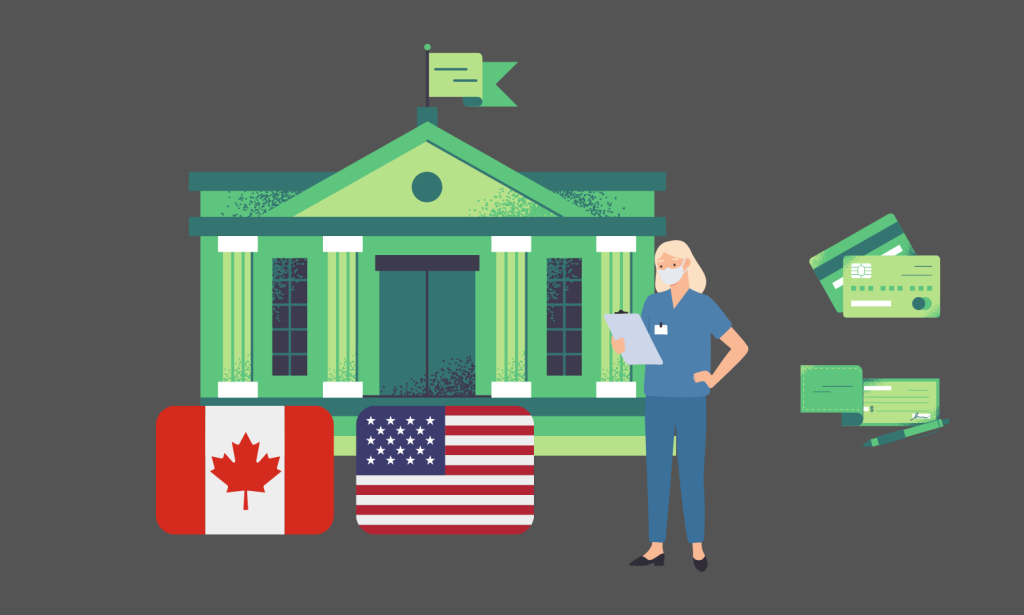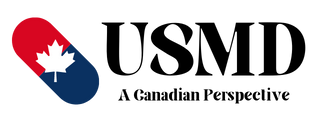
In Canada, it’s common for medical students to finance their degree with a line of credit. While most medical students at Canadian medical schools can easily qualify for line-of-credit products from the major banks, Canadians studying medicine in the United States have far fewer options.
However, that’s not the only thing that makes it difficult for Canadian US MD students.
- Attending medical school in the United States is far more expensive than attending medical school in Canada.
- Canadians do not qualify for American Federal Student Aid, and often don’t qualify for institutional financial aid
- Canadians studying at medical schools outside of Canada face huge barriers when it comes to qualifying for a Canadian medical student line-of-credit
With all of these disadvantages in mind, is it still possible to pay for medical school in the USA without wealthy parents? It’s possible, but you’ll have to do a few things right.
Choose the Right School
Not all US MD institutions that claim to accept Canadians are created equal.
Despite eye-watering tuition rates, Canadians don’t qualify for financial aid at some institutions. Before applying (and certainly before accepting an offer), check with each school’s financial aid office to see what options are available to you.
Some schools are clear leaders and offer the same financial aid consideration to Canadians (and other international students) as they do to American citizens.
We’re working on a comprehensive guide to “Canadian-friendly” medical schools, so be sure to check back often for that.
Choose the Right Bank
Though the ‘Big 5’ banks all appear to offer comparable Line-of-Credit products for Medical Students, things aren’t quite so simple for US MD students.
Personally, I had banked at RBC for my entire life prior to acceptance to a top US MD institution. I saw that RBC offered an excellent product – $350,000 CAD at an interest rate of prime minus 0.25%, and didn’t require a co-signer. As my school was well-known, my parents had a long-term relationship with the local branch and I had no debt, an excellent credit score and a long history of banking with them – I was sure it would be no problem to get approved.
In reality, dealing with RBC was a nightmare. Despite medical school in the states costing far more than in Canada, the best offer I received was $150,000 CAD at a high interest rate, with a co-signer. Simply put – that just wouldn’t cut it.
I understand that it can be risky to lend large sums of money to those studying medicine internationally – especially when many of these students are headed to predatory Caribbean medical schools with dubious match rates. However, it seems RBC has a blanket rule to offer the same amount to a student attending Harvard, Johns Hopkins or Columbia as they do to a student heading to an unranked, for-profit school in the Carribean. Despite the huge difference in risk between these cases, RBC treats them as equal.
In any case – don’t bother with RBC.
After calling around, I ended up connecting with Scotiabank. There, my experience was dramatically different. Scotiabank recently acquired MD Financial Management and have strong products from medical school to residency and beyond. They’re investing heavily in banking for the healthcare space, and it truly felt like they valued my business – despite having never banked with them before.
Scotiabank offered $350,000 CAD at the same prime minus 0.25% as they offer to domestic students. Additionally, there are other perks included, such as free premium credit cards with no foreign exchange fee and airport lounge access for your trips home. With the Scotiabank product, interest only accrues on money you use and no payments are required until after residency.
All-in-all, I received the same product as domestic students with one difference: Scotiabank still required a Canadian co-signer.
As you’ll likely guess, I ended up signing with Scotiabank and almost immediately gained access to the full amount which forms the bulk of my financial support for medical school.
While your experience might be different, if you’re headed to a US medical school I would emphatically encourage reaching out to Scotiabank about their Medical School Line of Credit. And no, I’m not affiliated with Scotiabank in any way.
I’ve also heard anecdotally that CIBC has a good product for USMDs, but I don’t have any specifics to share.
Apply for Canadian Student Loans
Even though you won’t be studying in the United States, if you’re studying at an accredited US MD medical school listed here – you’re likely eligible for Canadian student loans and grants.
While the amount offered won’t cover your entire education, there are plenty of benefits to applying for this government program.
First, it’s free money. No, really. Alongside the loans that you receive (that do not accrue interest until after you’ve completed your education), you may also receive grants – up to $6,000 a year as of 2022. You won’t ever have to repay these, so take advantage of it!
Next, the interest rate is unbeatable – 0% until you’re out of school. While the line of credit has low interest, it doesn’t beat no interest. Use up your student loan money first, before using your line of credit which will accumulate interest even while you’re still in school.
Finally, there are options for student loan forgiveness that you just don’t get with bank products. If you plan on returning to Canada and working in a rural or underserved area, you could receive up to $40,000 in forgiveness.
You can apply for Canada Student Grants and Loans through your province or territory; a handy list can be found here.
Scholarships
While there may be some scholarships available, the truth is that as a Canadian studying at an American medical school, you’re in a sort of no-man’s-land. You won’t be eligible for the vast majority of scholarships for American medical students and you won’t be eligible for the vast majority of scholarships for Canadian medical students. Despite quite a bit of research, I haven’t found any worthy of sharing.
Still, be sure to check with each school as there may be institutional-dependent options available.
In Summary
Attending an American medical schools is expensive, but it’s still possible to attend a US MD institution without a family fortune or years of savings.
- Apply to schools with good financial aid options for Canadians
- Apply for Canadian Student Loans and Grants through your provincial or territorial government
- Apply for a Medical Student Line of Credit through a US MD friendly Canadian bank (like Scotiabank) – but be ready to supply a Canadian co-signer
- Keep an eye out for scholarships you might be eligible for
By stacking these options, it’s certainly possible to afford even the most expensive medical school in a high cost-of-living area.
Finally, don’t be despaired by the high cost of attendance. Once you’ve attained your MD, the pay tends to be substantially higher south of the border – even during residency!
